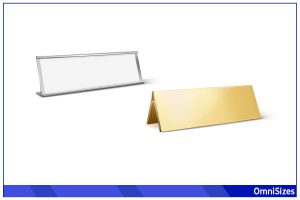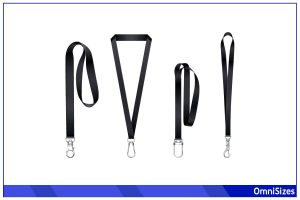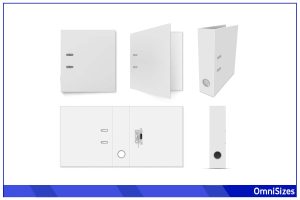Rubber bands are a common staple in various settings, from offices to classrooms and even in home utility drawers. The phrase “rubber band sizes” refers to the different dimensions that rubber bands come in. The size of a rubber band can determine its functionality and effectiveness.
Common rubber band sizes include:
- Size 8: 7/8 × 1/16 inches
- Size 10: 1-1/4 × 1/16 inches
- Size 14: 2 × 1/16 inches
- Size 32: 3 × 1/8 inches
Rubber bands are measured by laying them flat and measuring the length and width.

This guide will explain how rubber band measurements are recorded, as well as provide a comprehensive list of rubber band sizes and tips on how to choose the right rubber band.
Measuring a Rubber Band
Rubber bands are not a one-size-fits-all solution and come in a myriad of sizes. A rubber band’s size is determined by three dimensions: length, width, and thickness.
How to Measure Length and Width
To measure the length of a rubber band, simply place it flat on a ruler or a measuring tape. Stretch it out fully but without warping its natural shape to get an accurate measurement from end to end. This is usually done in inches or centimeters.
The Lay Flat Length (LFL) is the term used to describe the length of the rubber band measured when it’s laid flat. It’s the most common measurement you’ll encounter when purchasing rubber bands. Knowing the LFL helps you to understand how big the band will be when in use.
For the width, turn the band so that it’s perpendicular to the ruler and measure across the broadest part.
Measuring Thickness
Thickness might be a bit trickier to measure without precise tools. If you have a caliper, it’s perfect for measuring the thickness. If not, you might use a ruler, but it won’t give you as precise a measurement. Thickness is often listed by manufacturers and is a good indication of the band’s durability.
Calculating the Stretch Ratio
A rubber band’s stretch ratio determines its elasticity and how much it can hold. A good rule of thumb is that a rubber band can be safely stretched to twice its LFL. However, repeatedly stretching to the maximum can lead to wear and loss of elasticity.
Rubber Band Sizes
Here’s a handy chart that describes the most common rubber band sizes.
| Rubber Band Size Class | Length (in.) | Width (in.) | Length (cm) | Width (cm) |
| Size 8 | 7/8 | 1/16 | 2.22 | 0.16 |
| Size 10 | 1-1/4 | 1/16 | 3.17 | 0.16 |
| Size 12 | 1-3/4 | 1/16 | 4.45 | 0.16 |
| Size 14 | 2 | 1/16 | 5.08 | 0.16 |
| Size 18 | 3 | 1/16 | 7.62 | 0.16 |
| Size 19 | 3-1/2 | 1/16 | 8.89 | 0.16 |
| Size 30 | 2 | 1/8 | 5.08 | 0.32 |
| Size 31 | 2-1/2 | 1/8 | 6.35 | 0.32 |
| Size 32 | 3 | 1/8 | 7.62 | 0.32 |
| Size 33 | 3-1/2 | 1/8 | 8.89 | 0.32 |
| Size 62 | 2-1/2 | 1/4 | 6.35 | 0.64 |
| Size 63 | 3 | 1/4 | 7.62 | 0.64 |
| Size 64 | 3-1/2 | 1/4 | 8.89 | 0.64 |
| Size 73 | 3 | 3/8 | 7.62 | 0.95 |
| Size 74 | 3-1/2 | 3/8 | 8.89 | 0.95 |
| Size 82 | 2-1/2 | 1/2 | 6.35 | 1.27 |
| Size 84 | 3-1/2 | 1/2 | 8.89 | 1.27 |
| Size 94 | 3-1/2 | 3/4 | 8.89 | 1.91 |
| Size 105 | 5 | 5/8 | 12.7 | 1.59 |
| Size 107 | 7 | 5/8 | 17.78 | 1.59 |
| Size 117A | 7 | 1/16 | 17.78 | 0.16 |
| Size 117B | 7 | 1/8 | 17.78 | 0.32 |
Types of Rubber Bands
Choosing the Right Rubber Band Size
Rubber bands may seem simple, but there’s a surprising variety to suit different needs. Whether you’re organizing your office supplies or packing your belongings, there’s always a rubber band designed for the task.
1. Standard Office Rubber Bands
The most familiar types are the ones found in office settings. These are usually pale yellow and come in sizes perfect for bundling pens, small stacks of cards, or holding together files.
2. Industrial Rubber Bands
For heavier tasks, industrial rubber bands are thicker and more robust. They can secure large bundles of materials in warehouses or keep machinery parts together during transport.
3. Postal Rubber Bands
Postal rubber bands are another specific type, usually red, made to withstand the rigors of sorting and delivering mail. They need to be both strong and flexible, qualities that ensure they don’t snap under the strain of heavy letters and packages.
4. Produce Rubber Bands
Used in agriculture, these rubber bands are often green and made to bundle produce like asparagus or herbs. They are designed to be food-safe and resistant to moisture.
5. Specialty Rubber Bands
There are bands for almost every niche, from color-coded ones used for coding and organizing to UV-resistant bands that won’t degrade in sunlight to antistatic bands used in electronic manufacturing.
6. Heat-Resistant Rubber Bands
For applications involving high temperatures, these rubber bands can withstand heat without melting or losing elasticity. They are crucial in kitchens and industrial settings where heat is a factor.
7. Craft Rubber Bands
These come in bright colors and are used in various craft projects, from making rubber band balls to creating intricate loom bands. They are often smaller and more colorful than standard bands.
Usage and Storage Tips
Rubber bands are incredibly versatile, but storing them properly can help you get the most out of them.
1. Maximizing Rubber Band Life
To get the most out of your rubber bands, avoid overstretching them, which can cause them to snap. Instead, choose the right size for the job that can hold your items securely without being stretched to its limits.
2. Proper Storage
Store rubber bands in a cool, dry place away from direct sunlight, which can degrade the rubber and reduce elasticity over time. A drawer or a container inside a desk works well to protect them from light and heat.
3. Preventing Tangles
Keep different sizes separate using compartments or bags. This not only makes it easier to find the size you need but also prevents smaller bands from getting tangled with larger ones.






